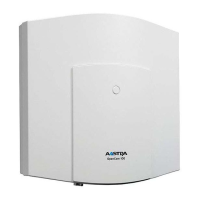Fixed Mobile Convergence
185
• Call number information such as e. g. the call number of an external caller can be
transmitted using the “CLIP no screening” feature available via the system con-
nection and thus be displayed on the mobile telephone.
• There is an information exchange via DTMF tones during a voice connection
between the communications system and the mobile telephone. This means that
e. g. the “R” key function is transmitted via a DTMF sequence with three star signs.
• A mobile telephone call with the FMC call number is considered the beginning of
the log-in procedure. After authentication via the call number (CLIP) or via a
special DTMF sequence, there is an audible internal dial tone on the mobile tele-
phone. The internal call number is now considered busy. The mobile telephone
user can now dial any internal or external call number and use system features.
• There is special software available for a series of mobile telephones: “Aastra Mobile
Client”. This software makes it convenient to use FMC telephony functions.
• The entry of a new message in the voicebox can be displayed on the mobile tele-
phone. This is done by the OpenCom 100 communications system calling the
mobile telephone from a special extension. The Aastra Mobile Client software
rejects this call and then shows that a voicebox message has arrived.
The following diagrams illustrate the integration of mobile telephones with the
OpenCom 100 communications system via FMC using three sample call situations:

